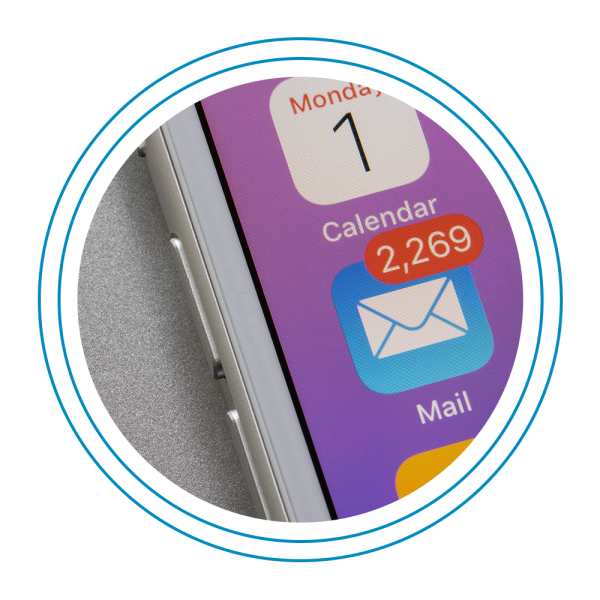Data privacy and its impact on automotive marketing. It was positioned to be a headlining story of 2022 as dealers evaluated the impact on their advertising strategies. But, between the ongoing vehicle inventory shortages and Google’s announcement that they will delay deprecating 3rd party cookies until 2023, the story has largely faded from view. If your dealership has put data privacy and its impact on automotive on the back burner, it’s time to turn up the heat. Why? The next update from Apple – iOS 15 – will impact your email marketing.
Before we go any further, no need to panic. Email marketing remains one of the most effective ways to influence car shoppers. The evidence suggests Apple’s iOS 15 update will likely impact how you and your vendor partners measure effectiveness. And the first hint of that impact will come quickly.
So, what is it and what should you be thinking about?
iOS 15 will go public for iPhones, iPads, and desktops using OS Monterrey this month. The update includes two features that will impact email marketing and measurement, Mail Privacy Protection and Hide My Email. At a high level, Mail Privacy Protection gives the consumer the opportunity to protect their email and prevent the tracking that tells people like you and me if, when, and where the email was opened. There’s no need to get into the technical weeds, but this update means when a customer or prospect receives an email on their Apple device, and they have opted into Mail Privacy Protection, that email will automatically register as “opened” regardless of the person’s actual activity.
Now you might be asking, is this the reality for everyone using an Apple device, and will it be effective immediately? The short answer to the first question is no. However, when Apple Mail user downloads the new operating system to their device, they will be asked if they want to protect their email. What we learned when Apple introduced App Tracking Transparency with iOS 14 this spring, 96% of Apple users said “Yes! Don’t track me.” So, it is prudent to expect a majority of Apple users to do the same with Mail Privacy Protection.
The second answer is yes, but not fully. We know from experience that the adoption of new operating systems comes in waves. Some cutting-edge techies update as soon as new features are available and others follow suit in waves. Suffice it to say, expect at least 75% of users to be up and opted in on the new updates by the end of 2021.
Which leads us to why this matters. Google Chrome’s plans with 3rd party cookie tracking is front and center because they are the dominating web browser – accounting for 65% of internet activity. Similarly, Apple is the dominant player in email. For dealers using email marketing (which is practically everyone), this update has the potential to impact up to half of the customers and prospects you engage via email.
Again, no need to panic. This update does not render email marketing ineffective. But it should cause you to pause, evaluate and adjust a few things.
Let’s look at a few high-level actions you can take.
1. Look back at Opens: Establish a measurement standard
Because Mail Privacy Protection automatically triggers the “open” pixel, you can expect your open rates to grow. To track how much, take a look at your history. Open rates vary from send to send, but normalize within a given range over time. Start by taking a look back at the first six months of 2021 to set a measurement standard. This gives you a benchmark to see how open rates change month to month. When you see the normalized open rate start to increase, you will have a general idea of how many of your customers are Apple Mail users and inflating your measurement.
2. Look beyond Opens: Expand your portfolio of email metrics
Open rates are a key metric in marketing reports. Yet by itself, the open rate has long been a flimsy performance measurement. Open rates can be an indicator of awareness, but engagement is better measured by clicks and conversions. Open rates are typically higher and look better on a report, and iOS 15 will likely only inflate those numbers. Resist the urge to take credit for the higher open rates that everyone will see as more users download the new operating system.
Instead, pay MORE attention to click thru rates and conversion metrics. In order to understand email campaign effectiveness at a greater level, utilizing UTM tags and Google Analytics are another incredibly effective way to monitor email performance and conversion. At Client Command, we also measure effectiveness through match back reporting and give dealers visibility into the impressions, frequency and clicks that influence a sale. Your vendors are likely already measuring the effectiveness of email marketing with an equal or greater focus on clicks and conversions. It’s important that you make sure you extend this to internal email engagement efforts, such as email cadences from your CRM.
3. Assess your Automation “Triggers”: Disable cadences based on “Opens”
Marketing automation is built on trigger events. If X action happens, Y cadence is deployed. There is a high likelihood that at least one email cadence set up in your CRM are built around whether someone opens or does not open an email. Opens is far from the only trigger, but is common, especially within dealership operations.
Instead, tie triggers to a more reliable action; such as ownership milestones, service activities or important events. To go deeper, build trigger events inside those cadences, based on clicks — to the enclosed offer, digital retailing tool or form. At Client Command, our marketing automation is triggered by online shopping activity and clicks to lead forms.
4. Resist the urge to react: Entertain some level of the “wait and see” approach
Yes, we know enough to take some proactive action like the steps previously mentioned. But even the Email Service Providers (ESPs) who think only about email delivery all day every day, are taking some level of the “wait and see” approach versus an all-encompassing game plan. They are making necessary adjustments now (including but not limited to the ones mentioned prior), preparing to measure the full impact over a period of time and make optimizations and recommendations accordingly. We experienced this earlier this year when Apple released iOS 14 – partners positioned themselves for the change and continue to optimize as we learn more about the nuances of the impact. Adjustments from ESPs could further impact OR improve email marketing measurements. So, if the ESPs are waiting, there is wisdom in following their lead.
Net-net. Email marketing remains a highly effective way to stay in front of car shoppers and a critical component of your omni-channel marketing strategy. As iOS 15 rolls out and users begin to sign on, start adjusting what you can control – how you measure effectiveness and how you trigger your email cadences – and be ready to adjust to residual impacts. The key is working with partners you trust — committed to staying up to speed, working to keep you ahead of the curve and ready to navigate these and future changes with you.
Article originally published here https://clientcommand.com/ios-15-and-dealership-email-marketing/.






